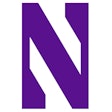Complying with the ADA requires awareness of the smallest of obstacles.
The Americans with Disabilities Act has dramatically improved the lives of disabled individuals by helping make all public places both accessible and hospitable. However, building accessibility is a process, with requirements that must be considered on an ongoing basis, including:
Compliance in building entrances starts with accessible parking spaces.
The general rule of thumb is that one parking spot in every group of 25 or fewer spaces needs to be handicapped-accessible. In other words, a lot with 26 to 50 spaces should include two accessible spaces.
Each accessible parking space must be marked with a sign bearing the international symbol of accessibility.
Spaces should also be bordered by a clearly marked access aisle at least 5 feet wide (one in every eight accessible spaces must be served by a van-accessible access aisle at least 8 feet wide).
Accessible parking spaces should be the ones closest to a wheelchair-accessible entrance.
A competing consideration is the building elevation. Accessible spaces should be located on level ground that is free from potentially dangerous slopes.
A flat, stable, slip-resistant, stair-free accessible route must lead from each access aisle to the nearest accessible building entrance.
If the access route must cross through an area with vehicular traffic, a marked crosswalk should be provided.
The removal of steps generally requires the installation of ramps or lifts.
Ramps should have as shallow a slope as possible, never exceeding a rise/run ratio of 1:12. If the slope of a ramp is 1:20 or steeper and its total vertical rise exceeds 6 inches, the ramp must be equipped with handrails. All accessible ramps must be a minimum of 36 inches wide.
If possible, grade the ground adjacent to a ramp to match the ramp's slope.
This prevents steep drop-offs, and increases the ramp's overall safety.
All non-accessible entrances must have clear signage directing the way to the nearest accessible entrance.
The accessible entrance must be left open or unlocked during business hours.
If an accessible entrance needs to be kept locked because of security concerns relating to its location, it must be equipped with an intercom or buzzer. In such cases, the button activation needs to be mounted at an accessible level (no more than 4 feet above the ground).
Don't overlook door hardware.
Any type of door handle that requires tight grasping, twisting or use of a thumb-latch can present an entry obstacle, particularly for people with mobility issues or arthritis. Lever and loop handles are the easiest types for everyone to use. (Power-assisted doors are not required.)
Turnstiles and/or security gates should be modified so that people who use wheelchairs, canes, crutches or walkers can easily enter and exit.
Suitable options include removing a turnstile, implementing an accessible turnstile or providing an accessible gate adjacent to existing standard turnstiles.
Plan for temporary obstructions.
In cases where cables, hoses or air lines need to be routed across pathways, gently sloping, slip-proof ADA ramps specifically for use as cord covers are available that can be fitted with an optional side rail system for added safety.




































